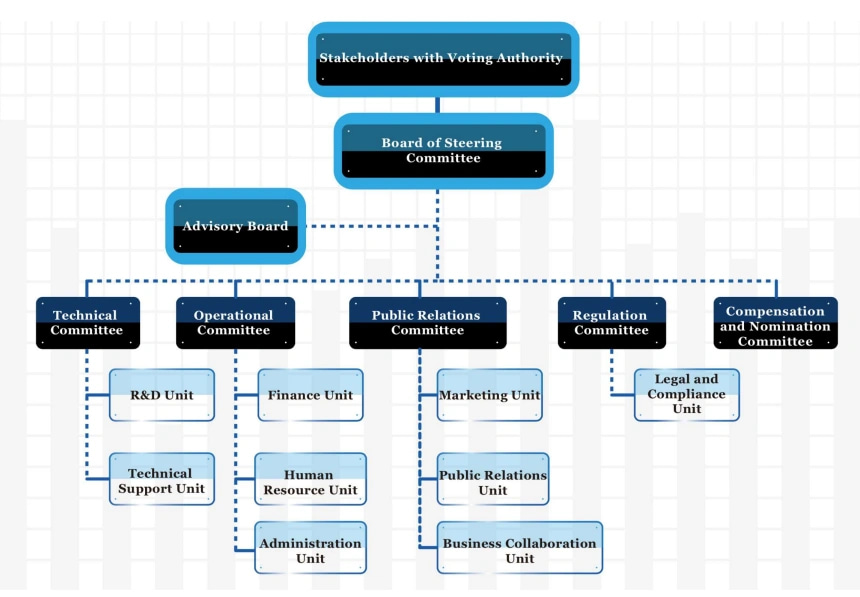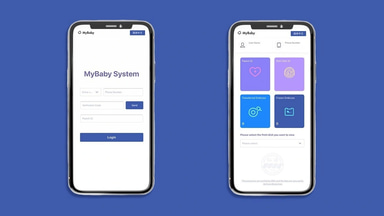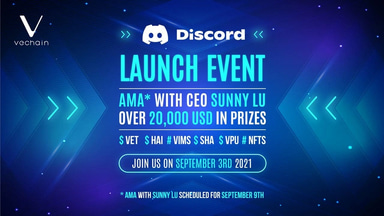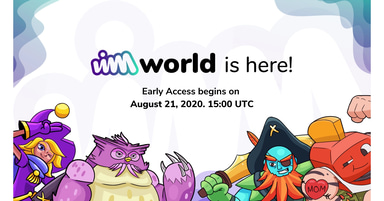Read
Edit
History
Notify
Share
VeChain
VeChain is a blockchain-based platform that focuses on providing supply chain solutions for businesses. VeChain utilizes VeChainThor, a public blockchain designed for mass adoption of blockchain technology by enterprise users of all sizes to enhance supply chain management and streamline business processes through distributed ledger technology (DLT). [1][2]
Overview
VeChain was founded by Sunny Lu and was launched on the Ethereum blockchain in 2015 as a subsidiary of Bitse, a Chinese, blockchain as a service (BaaS) company. [2][3]
The platform features different governance and economic models and also aims to improve its protocol to provide efficient and transparent transitions and controllable and predictable costs. It builds upon the essential building blocks of Ethereum and aims to offer solutions for enterprises as well as developers. [4]
VeChain builds its ecosystem in order to provide a robust governance framework and an economic model for businesses to operate decentralized operations. They aim to obtain these goals by implementing meta-transactions, proof-of-authority (PoA) consensus and their two-token system. [4][5]
Tokenomics
VeChain utilizes a two-token system, designed to separate the cost of using the blockchain from market speculation consisting of VeChain Token (VET) and VeThor Token (VTHO). The correlation between blockchain resource utilization and the cost of VTHO allows for a more predictable cost through monitoring the supply and demand of VTHO. Additionally, the VeChain Foundation's governance mechanism further stabilizes the cost. [4][6]
VET serves as a value-transfer medium, enabling rapid value circulation within the VeChainThor ecosystem. It represents the smart money of the ecosystem, detached from the direct cost of using the blockchain which is represented by VTHO. The total supply of VET is capped at 86,712,634,466 tokens. [4][6]
The supply of VTHO is derived from payment and smart contract transaction fees on VeChainThor. VTHO is generated from any address holding VET at a predetermined velocity. 70% of VTHO paid in each transaction is burned, while the rest is awarded to the Authority Masternode Operator. Variables such as gas price and velocity can be adjusted to maintain equilibrium between VTHO demand and supply. [4][6]
Governance
The VeChain platform utilizes a unique governance model that balances decentralization and centralization to adapt to the different stages of development in the blockchain technology and ecosystem. In their whitepaper, they state that “complete decentralization has been proven to have obvious defects in every applied method”. [7]
“We believe in the balance of decentralization and centralization on which VeChainThor platform’s governance is designed”
The decentralized operating mechanism of the blockchain technology grants VeChain a unique governance structure, with a Board of Steering Committee serving as the governing body, selected by identifiable stakeholders with VET Voting Authority. The Steering Committee lays out critical strategies and selects functional committee chairs to oversee the operational units of the ecosystem. This governance structure is designed for visibility, inclusiveness, transparency, flexibility, and efficiency to facilitate the development, innovation, coordination and advancement of the VeChainThor Blockchain ecosystem. [8]
 Stakeholder categories
Stakeholder categories
There are three categories of stakeholders who have voting authority: Authority Masternodes, Economic X Nodes, and Economic Nodes. [8]
Authority Masternodes are network maintainers who must hold at least 25,000,000 VETs at any given time and go through identity verification and background check by the foundation. They are the only nodes that are authorized to pack blocks on the VeChainThor blockchain and are rewarded by 30% of the transaction fee in each block. [8]
Economic X Nodes and Economic Nodes were created as the initiative at the early stage of the ecosystem. Each node holder needs to stake a minimum amount of VET and wait for a maturity period according to the node type and tier. The status of Economic X Node and Economic Node is tokenized according to VIP181 standard and managed by the VeChainThor Node smart contracts. Economic X Node holders are considered as long time supporters of the VeChain ecosystem. [8]
There are four tiers of Economic X Nodes: [8]
There are three tiers of Economic Nodes. Authority Masternodes have the most voting authority at 40%, Economic X Nodes also have 40% and Economic Nodes have 20% voting authority. Each category and tier has different minimum VET holding and votes per node. [8]
Voting Authority
VET holders’ voting authorities are calculated by their voting authority model depending on their specific role and tier. The minimum amount of VET needed per role and tier and the corresponding voting authorities are: [8]
Proof-of-Authority (PoA)
VeChainThor is maintained by Authority Masternode Operators, who work in alignment with the VeChain Foundation. The Proof-of-Authority (PoA) consensus mechanism used in VeChain is designed to address common enterprise concerns like inefficient upgrades and excessive energy usage. It also requires relatively low computational power to maintain network security and consensus integrity. The network is controlled via built-in smart contracts, which allows for the avoidance of hard forks in the event that Authority Masternodes fails to upgrade. [8]
To become an Authority Masternode, individuals or entities must voluntarily disclose their identities and reputations to the VeChain Foundation, and go through a strict know-your-customer (KYC) procedure. This ensures that all Authority Masternodes have additional incentives to behave and keep the network secure. [8]
In VeChainThor, a new block is scheduled to be generated every 10 seconds, based on the usage of VeChainThor. The block is generated by the Authority Masternodes and the "trunk" is chosen from two legitimate blockchain branches by the Authority Masternodes. [8]
PoA2.0
On November 17th 2022, the VeChain Foundation upgraded its blockchain, VeChainThor, to a new protocol known as Proof of Authority 2.0 (PoA2.0). This upgrade aimed to make the project more robust, scalable, and secure by bringing new security mechanisms and finality to the blockchain. [9][10]
PoA implements the Finality with One Bit (FOB) feature and the Verifiable Random Function (VRF) based random beacon generator scheme, a method for generating random numbers in a decentralized manner using a VRF. Additionally, PoA2.0 includes a 'committee' function which adds an extra layer of verification, making the blockchain more secure and less susceptible to interference. [11]
Finality with One Bit (FOB)
Finality with One Bit allows VeChainThor to run the Nakamoto and Byzantine Fault Tolerance (BFT) consensus simultaneously combining the strengths of the two models while eliminating their individual weaknesses. [11]
Nakamoto Consensus
Nakamoto consensus is a consensus algorithm that was first introduced in the Bitcoin whitepaper. It is based on the idea of "one CPU one vote," where each node in the network has an equal say in the consensus process. It uses a proof-of-work mechanism, where nodes compete to solve a difficult mathematical problem in order to create a new block. The first node to solve the problem gets to create the block and add it to the blockchain. [11][12]
Byzantine Fault Tolerance Consensus
BFT consensus, short for Byzantine Fault Tolerance, is a consensus algorithm that is designed to be resistant to certain types of failures. It is based on the idea that the network is made up of nodes, some of which may be faulty or malicious. The goal of BFT is to ensure that the network can reach consensus even in the presence of these faulty or malicious nodes. This is typically achieved by having nodes communicate with each other and come to an agreement on the state of the network, rather than relying on a single node to solve a difficult mathematical problem like in Nakamoto consensus. [13]
Verifiable Random Function (VRF)
A VRF is a cryptographic function that takes in a secret key and an input, and outputs a random value that can be verified with a corresponding public key. In a VRF-based random beacon generator scheme, a group of nodes, called validators, are each assigned a secret key. They take a certain input, such as the current time, and use their secret key to generate a random value using the VRF. The output of the VRF, called the VRF output, along with the input and the public key of the validator, are then broadcast to the network. The validators then vote on the output and the input that generated it, and if a supermajority (more than 2/3) of validators agree on the output, it is considered a valid random value and is added to the blockchain. [14]
VeChain ToolChain
VeChain ToolChain is a blockchain-as-a-service (BaaS) platform that aims to make it easy for small and medium-sized enterprises (SMEs) and individuals to integrate blockchain technology into their businesses. It was officially launched on April 18th 2019, at the 2019 VeChain Summit, the first global developer conference of VeChain. [15]
One of the key features of VeChain ToolChain is a variety of general interfaces to essentially eliminate the high technical threshold and substantially lower the costs for SMEs or even individuals in blockchain integration. ToolChain also includes a vertical blockchain application focusing on product life cycle management, which can be used as a SaaS solution or customized as a turnkey package. The solution can integrate with the existing business of the enterprises without development requirements allowing companies without blockchain development capabilities to acquire a secure and mature blockchain solution at a reasonable cost. To meet the diverse demands of the market, VeChain ToolChain solution is currently available in three versions: Standard Version, Developer Version, and Channel Partner Version. [16]
Standard Version
VeChain ToolChain Standard Version provides various standardized application modules, tools and IoT devices. This allows SMEs with no development capability to have their own blockchain-based lifecycle management solution. [16]
Developer Version
For enterprise customers with strong technical capabilities, the developer version can provide a variety of API interfaces, SDK development kits, and detailed developer documentation. With these, enterprises can develop various applications based on the VeChainThor Blockchain according to their own needs and desired hardware solutions. [16]
Channel Partner Version
The Channel Partner Version supports independent deployment and multi-dimensional customization of ToolChain based on the channel partner’s business strength. To become a channel partner, you only need to apply for authorization from VeChain before receiving the ToolChain Turnkey packages for customization and independent deployment. This version creates a win-win situation by allowing VeChain’s partners to build their own blockchain-based business ecology to serve their customers. [16]
Built in Contracts
VeChainThor has six built-in smart contracts that work together to achieve a more efficient and secure transaction processing system on the VeChainThor blockchain. They provide a stable and dynamic supply of a sub-token that covers transaction costs, while expanding the capabilities of the Ethereum Virtual Machine (EVM) for developers. They also offer flexible governance parameters that can be established by a voting committee and a smart contract management tool for flexible contract usage and cost management. [29]
- authority.sol: used to manage a list of authorized proposers who are responsible for packaging transactions into blocks on the VeChainThor blockchain. These proposers are selected and maintained through a voting process by a committee. Only the top 101 proposers in the candidate list are able to package blocks.
- energy.sol: represents sub-token: VeThor, a ERC-20 standard token that covers the cost of transactions within the VeChainThor network. VeThor is generated from the VeChain Token (VET) and has an initial supply of zero in the genesis block. The rate of VeThor production is determined at 5000000000 wei per token (VET) per second, equating to roughly 0.000432 VeThor per day per VET. Additionally, 30% of transaction fees are retained by the miner while the remaining 70% are burned, resulting in a dynamic total supply of VeThor.
- executor.sol: Expands the capabilities of the Ethereum Virtual Machine (EVM) by allowing developers to access information about current and past transactions, as well as blocks within the range from the first block (genesis block) to the most recent block (best block).
- params.sol: Retains the governance parameters of VeChain Thor. These parameters can be established by the executor, which is a contract that has been granted permission to alter the governance parameters by a voting committee.
- prototype.sol: a smart contract management tool for the VeChain Thor blockchain. It provides a way to manage users and sponsors of a contract, set credit limits and recovery rates, and select sponsors to pay for transaction fees. It allows for flexible management of contract usage and costs, while also allowing for multiple sponsors to support a contract.
$6.5 Million hack
On December 13th 2019, Vechain buyback wallet was hacked, resulting in the loss of 1.1 billion VET tokens valued at around $6.53 million. The stolen funds were then withdrawn to a private address. VeChain tracked the stolen funds and worked with cybersecurity firm, Hacken, to stop the flow of tokens to various exchanges. The hacked funds represent around 1% of the total VET tokens in circulation, which has a fixed supply of 86.7 billion tokens. VeChain attributed the hack to human error within the foundation and has since corrected the error and protocols. [17]
On December 22nd 2019, VeChain announced that their chief financial officer Jay Zhang will be stepping down and will only be receiving half of his compensation for 2020, taking responsibility for the compromised wallet. They also announced that the community voted for the hacked funds to be permanently burned, bringing the total supply of VET tokens down. [18]
History
On February 3rd 2020, VeChain established partnerships with Walmart China, which has begun using the VeChainThor blockchain to track products on its platform. The Walmart China Blockchain Traceability Platform (WCBTP) is a joint venture between Walmart China, PricewaterhouseCoopers (PwC), Inner Mongolia Kerchin and the China Chain-Store & Franchise Association. By scanning a QR code, customers can view information about a product's origin, logistics process, and product test report. VeChain's technology is being used by more companies to combat counterfeit products, which cause annual sales losses of over $509 billion. [19]
On February 20th 2020, the 8Hours Foundation launched VIMWorld, a blockchain-based tabletop game ecosystem, on the VeChainThor blockchain. The ecosystem supports multiple games and services that use the 8Hours Token (EHrTs) and it's designed to combat the negative effects of communication technologies on social engagement by creating incentives and rewards for participants. VIMWorld is a non-fungible token (NFT)ecosystem that is designed to create a space where "entrepreneurship and play are mutually beneficial". [20]
On May 4th 2020 VeChain, Mastercard, and Alipay joined forces to form the APAC Provenance Council, a consortium dedicated to developing technology for supply chain tracking in the Asia-Pacific region, with a special focus on trade between China and Australia, which is estimated to be worth $76 billion annually. VeChain uses its blockchain technology to monitor and track products, and Mastercard will use its authorized ledger. The partnership also allows for more efficient payment methods for traded products, with payments being made in parts and various digital wallet options available. [21]
On May 17th 2020, VeChain and I-Dante are developing a blockchain-based medical data management solution called "The E-NewHealthLife" for the Mediterranean Hospital of Cyprus. The solution will use encrypted NFC cards, based on VeChain's ToolChain™, for patient registration and data access through a web-app. The data is protected by compliance with the EU's general data protection regulation. [22]
On April 28th, 2021, VeChain announced that it will be allocating $1 million towards a new grant program. This program’s goal was to develop and support a vibrant enterprise non-fungible token (eNFT) ecosystem on the VeChainThor platform. This proposal was put forth by the VeChain research team, who believed that eNFTs will be a game-changer for the industry and that businesses will play a major role in driving their adoption. With this grant program, VeChain aims to help facilitate the adoption of NFT technology by creating a strong eNFT ecosystem on its platform. [23]
On June 2nd, 2021, Renji Hospital in Shanghai, China, announced the launch of MyBaby, a blockchain-based In-Vitro fertilization (IVF) service application. The project is a partnership between VeChain and DNV, and aims to improve the IVF process for patients by providing better data management and transparency of the baby's development. [24]
On September 3rd 2021, VeChain launched their Discord server, in hopes of increasing engagement and expanding the community. The launch came with an event where active members of the server were given prizes which included: 100,000 VET tokens, 10 VIMs (Smart NFT collectibles), 5 VPunks NFT collectibles, 5,000 VPU tokens, 25,000 SHA tokens, and 10,000 HAI tokens. [25]
On January 4th 2022, VeChain, in partnership with Stably, CREAM, and Prime Trust, announced the launch of its first native stablecoin, VeUSD. The contract for VeUSD was expected to unlock new applications and functionalities for both community and enterprise partners. The stablecoin is fully compliant and is backed by physical reserves of fiat money and is pegged to the US dollar. [26]
On April 28th 2022, VeChain became a member of the Blockchain Infrastructure Alliance (BIA). The BIA is an organization made to fund research and incubate projects to address challenges in the field, established in 2020 by industry leaders such as Alchemy Pay, Polygon, Avalanche, NEAR, and Algorand. [27]
Steering Committee
- Renato Grottola
- Antonio Senatore
- Sunny Lu
- Jay Zhang
- Peter Zhou
Advisory Board
- Jen Breyer
- CY Cheung
- James Gong
- Masanari Koike
- Ning Nan
- Bo Shen
- Roland Sun
VeChain
Commit Info
Edited By
Edited On
March 27, 2023
Feedback
Average Rating
How was your experience?
Give this wiki a quick rating to let us know!
Twitter Timeline
Loading
Media











REFERENCES
[1]
[2]
[3]
[4]
[5]
[6]
[7]
[8]
[9]
[10]
[11]
[12]
[13]
[14]
[15]
[16]
[17]
[18]
[19]
[20]
[21]
[22]
[23]
[24]
[25]
[26]
[27]
[28]
[29]





